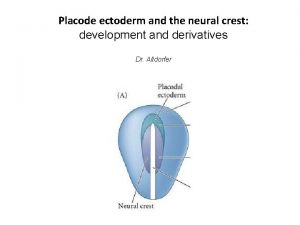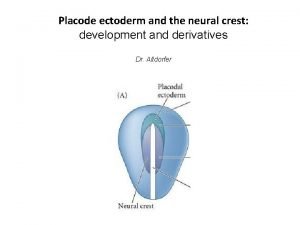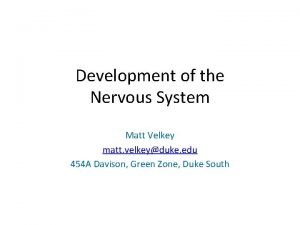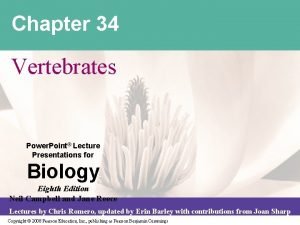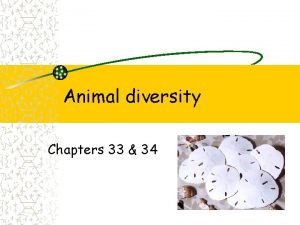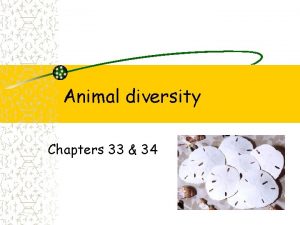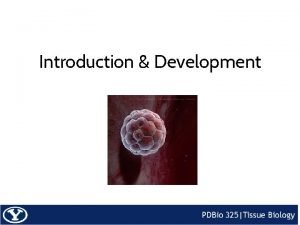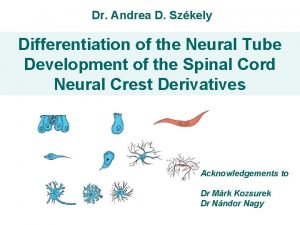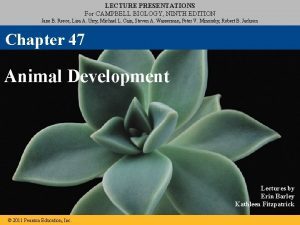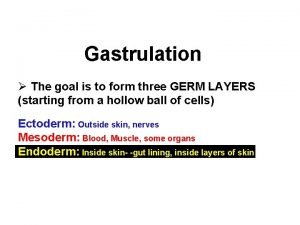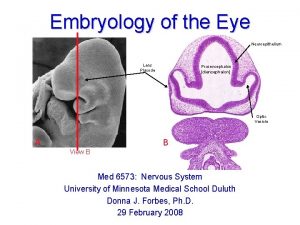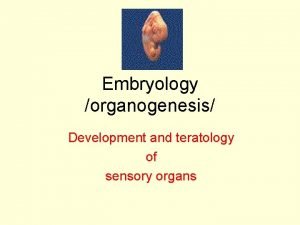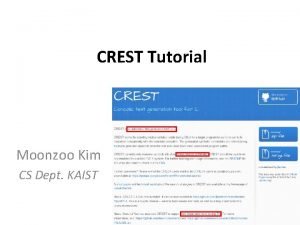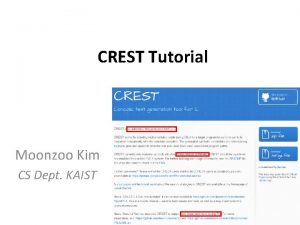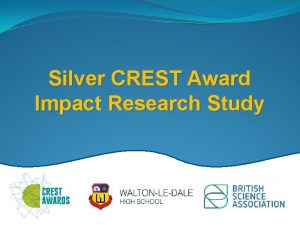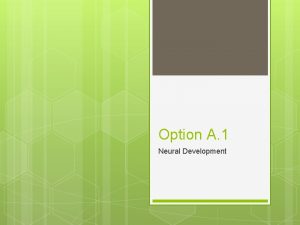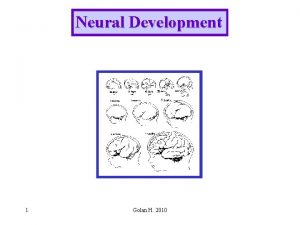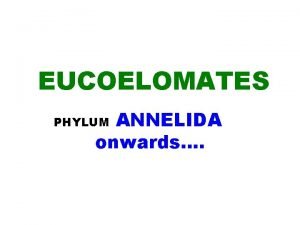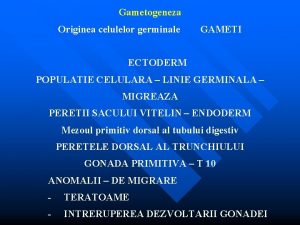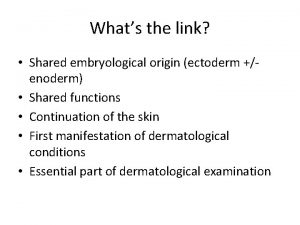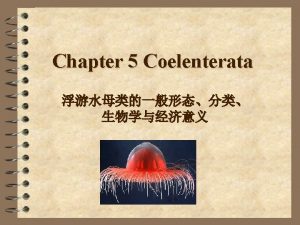Placode ectoderm and the neural crest development and























- Slides: 23

Placode ectoderm and the neural crest: development and derivatives Dr. Altdorfer

3 week-old human embryo

1. Placodes - and neural crest Placode: cranial, lateral, epithelialial tickenings: „Plaque” may form vesicles Neural crest: caudal, medial. EMT: epithelio-mesenchymal transition Prof. Szél

Placode Derivative Hypophyseal Rathke’s pouch Adenohypophysis Olfactory Lens Trigeminal Otic Epibranchial Olfactory epithelium Lens Trigeminal ggl. (partly) Otic vesicle membranous labyrinth, spiral+vestibular ggl. * (VIII. ) Epibranchial –> geniculate ggl. (VII. ), inf. ggl. of IX. and X. nerves* Neural plate Neural crest Ectoderm Brain, spinal cord ganglia, … epidermis of skin, … *Special sensory ganglia! after Webb and Noden (1993)

Placodes form cranial ganglia

2. Neural crest 3 week-old human embryo

Ectoderm/neuroectoderm specification Molecular regulation of NC development, NC induction The margin of the neural plate and the neighbouring ectoderm, from which epidermis develops, influence each other. The concentration of BMP 4 and BMP 7 is • high - in the future epidermis, • low - in the neural plate (because here chordin and follistatin decrease their expression). • medium - in the areas of the future neurel crest. snail-1 and slug (snail-2) expression starts which is needed for EMT (epithelio-mesenchymal transition) slug is expressed at gastrulation as well! Changes in adhesion properties (adhesion molecules) C. Milet, A. H. Monsoro-Burq / Developmental Biology 366 (2012) 22– 33

After induction: migration ECM: Fibronectin, laminin, and type IV. collagen are favorable ECM: chondroitin-sulfate: non-favorable cell-surface integrins TRUNK HEAD In the head region neural crest cells start the migration before the closure of the neural tube, not in the trunk

Neural crest - derivatives Neural crest cells are a multipotent progenitor population, so that the fates of specific crest populations must be controlled through environmental factors during normal development. 1 a 1 b 1 c 2 a 2 b 2 c Bipolar neuroblast Neuroblast (in pseudounipolarisation) Pseudo-unipolar ganglion cell (DRG) Unipolar neuroblast Multipolar neuron: sympathetic ganglion cell Chromaffine cells of adrenal medulla 3 a 3 b 3 c 4 a 4 b 4 c 5 a 5 b Spongioblast / glioblast Schwann cell Satellite cell Mesenchymal cell Leptomeningeal cell (arachnoidea and pia mater) Cell of mesectoderm Melanoblast (pigment cell) Melanocyte A B C D Neural crest Neural tube (mantel zone) Mesenchyme Neural tube (ependyme) http: //www. embryology. ch

Neural crest cells are a multipotent progenitor population, the fates of specific crest populations must be controlled through environmental factors during normal development. In the trunk region the neural crest cells are divided into two groups: - Those which migrate dorsally, differentiate to melanocytes in the skin and hair follicles. - migrating through the ventral pathway can form sensory ganglia and the accompanying satellite cells and Schwann cells, or form autonomic ganglia: sympathetic and enteric neurons, satellite cells, Schwann cells, and cells of the adrenal medulla. The neural crest cells of the head region have more opportunities: Neural derivatives: - Sensory ganglia (general sensory ones): -superior ganglia of the IX. and X nerves, -part of the trigeminal ganglion (other part: from placode). -Autonomic ganglia: ciliary (III. ), pterygopalatine, submandibular (VII. ) and otic (IX. ) ganglia (all these from 2 nd rhombomer – located next to CN V. branches) “ectomesenchymal” tissue: -bones of the skull (frontal, parietal bones, squama of the temporal bone, nasal, palatine bones, vomer, maxilla and mandible) -all meninges , choroid and sclera of the eye -dentin of the teeth -connective tissue of the glands (lacrimal, nasal, labial, palatine, oral), thyroid and parathyroid glands and thymus -connective tissue of the head (including melanocytes), cartilages, ligaments, and tendons -tunica media of the outflow tract of the heart and the great vessels (conotruncal septum)

Migratory pathways Trunk neural crest

Neural crest cranial NC migrating into the skull and branchial arches; cranial mesenchyme, cranial ganglia pia, arachnoidea cardiac NC - aorticopulmonary septum (in truncus arteriosus) vagal NC -enteric nervous system (intramurale ggl. ) in GI tract (from pharynx till colon) -parafollikular (C-) cells in thyroid gland trunk NC DRG (nerve cells + supporting cells) sympathetic trunk adrenal medulla lumbosacral NC intramural ggl. (colon)

The circumpharyngeal neural crest arises in the posterior rhombencephalic region, and in the lower part of the pharynx, emigrating circumpharyngeal crest cells pass behind the sixth pharyngeal arch. Neural crest cells from the anterior rhombencephalon to the level of somite 5 emigrate from the circumpharyngeal crest as a stream, called the cardiac crest, toward the developing heart and aortic arches, whereas other neural crest cells from the levels of somites 1 to 7 constitute the vagal crest and migrate into the developing gut as precursors of the parasympathetic innervation of the digestive tract.

19 -day old chicken embryo colon Remak ganglion plexus myentericus plexus submucosus Dr. Nagy

Hirschprung’s disease (megacolon congenitum aganglionare) -developmental anomaly; affects 1: 5000 human infants. • • • complete absence of ENS in the distal bowel (no relaxation!); proximal colon becomes distended 90% are diagnosed as newborns. Failure to pass stool within 1 st 2 days of life, abdomen distended, vomiting Dr. Nagy

Head neural crest Rhombomeres 1, 2, (3) Rhombomeres (3), 4, (5) Rhombomeres (5), 6, 7, 8 NC cell migration in 3 streams: • ‘trigeminal’ – around 3 divisions of CN V. (1 st branchial arch*+frontonasal process) • ‘hyoid’ – into 2. branchial arch • ‘postotic’ (= behind otic vesicle) – into branchial arches 3 -6. Ectomesenchym: bones, cartilage, conn. tissue, vessels * 2 of 3 auditory ossicles, jaw (Meckel’s cartilage)- skull… „new head”

Head neural crest Rhombomeres 1, 2, (3) Rhombomeres (3), 4, (5) Rhombomeres (5), 6, 7, 8 NC cell migration in 3 streams: • ‘trigeminal’ – around 3 divisions of CN V. (1 st branchial arch*+frontonasal process) • ‘hyoid’ – into 2. branchial arch • ‘postotic’ (= behind otic vesicle) – into branchial arches 3 -6. Ectomesenchym: bones, cartilage, conn. tissue, vessels * 2 of 3 auditory ossicles, jaw (Meckel’s cartilage)- skull… „new head”

Head neural crest

Head neural crest Tooth development

Head neural crest NC participation in the ganglia

New Head Hypothesis Plasticity of neural crest cells… ecto-mesenchyme Special composite sense organs, complex visual organ is important in predation. Jaws for predation! NC Pigment cells against UV radiation, accomodation to environment. Complex viscerocranium and chondrocranium development. Elements of cranial organization at the core of the `New Head Hypothesis'. The New Head Hypothesis (NHH) of Carl Gans and Glenn Nothcutt (Gans and Northcutt, 1983), as schematized in mouse (A-D) and human (E) embryos. Schematics of embryonic day 9. 5 mouse embryos, highlighting specific major tissue components of the NHH. Vertebrates exhibit unique characteristics, such as -(A) an expanded alar plate of the forebrain; -(B) formation of neurogenic sensory placodes from the surface cephalic ectoderm; -(C) a migratory mesenchymal population of cranial neural crest cells that invade the branchial arches (BA) and surround the expanded forebrain and rostral primary sensory placodes; and -(D) an expanded skeletal system to support the new rostrally expanded forebrain, rostral sensory capsules and BAs. -(E) The hypothesized shift from a passive suction feeding protovertebrate to a predatory vertebrate with jaws made from modified BA elements necessitated a high degree of craniogenic developmental and functional integration. Abbreviations: BA, branchial arches; di, diencephalon; hb, hindbrain; mb, midbrain; olf, olfactory; op, optic; ot, otic; tel, telencephalon On the trail of the `new head' in Les Treilles Marianne Bronner-Fraser, Development 2008 135: 2995 -2999; doi: 10. 1242/dev. 019901

Di. George syndrome - hoxa-3 gene defect Mesenchymal elements of cranialis crest (III-IV. pharyngeal arches) are defective Aplasia of thymus and parathyroid gland (III-IV. pharyngeal pouches), „fishmouth” deformation (shorter philtrum), deformation of lingual and cervical muscles, hypertelorism, malformations of the heart Prof. Szél

References Schoenwolf, Bleyl, Brauer, Francis-West: Larsen’s Human Embryology, Elsevier S. F. Gilbert: Developmental Biology, Sinauer associates, Inc. Publishers T. W. Sadler: Langman’s Medical Embryology, Williams & Wilkins B. M. Carlson: Human Embyology and Developmental Biology Lectures of Anatomy Department (Prof. Szél Á. , Prof. Csillag A. , Prof. Kálmán M. Dr. Nagy N. , Dr. Kocsis K. , Dr. H. -Minkó K. ) Neural regulation of human life processes – from the neuron to the behaviour. Interdisciplinary teaching material concerning the structure, function and clinical aspects of the nervous system for students of medicine, health and life sciences in Hungary University of Pecs; Dialóg Campus Publishing-Nordex Kft.
 Placode
Placode Neural crest
Neural crest Neural crest
Neural crest Hominin
Hominin Neural crest
Neural crest Neural crest
Neural crest What is this?
What is this? Sulcus limitans
Sulcus limitans Mesoderm ectoderm and endoderm
Mesoderm ectoderm and endoderm Ectoderm endoderm mesoderm
Ectoderm endoderm mesoderm Placode
Placode Recessus tubotympanicus
Recessus tubotympanicus Power of sine wave
Power of sine wave Skid lashing services
Skid lashing services Hát kết hợp bộ gõ cơ thể
Hát kết hợp bộ gõ cơ thể Bổ thể
Bổ thể Tỉ lệ cơ thể trẻ em
Tỉ lệ cơ thể trẻ em Voi kéo gỗ như thế nào
Voi kéo gỗ như thế nào Tư thế worm breton
Tư thế worm breton Chúa sống lại
Chúa sống lại Môn thể thao bắt đầu bằng từ đua
Môn thể thao bắt đầu bằng từ đua Thế nào là hệ số cao nhất
Thế nào là hệ số cao nhất Các châu lục và đại dương trên thế giới
Các châu lục và đại dương trên thế giới
